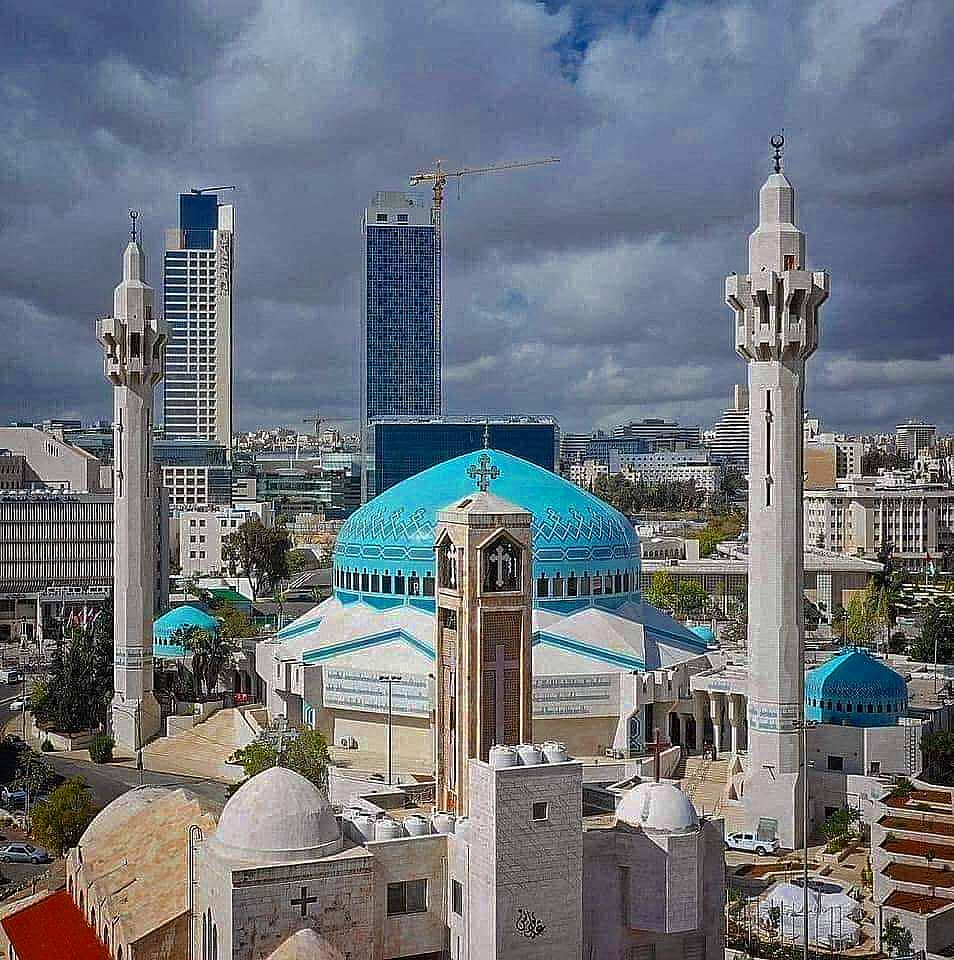Jordan’s many important Christian religious sites have received worldwide recognition this year, in view of the pilgrimage by Pope John Paul II, other Jubilee Year 2000 activities and continued excavation and development of the site of Jesus’ baptism at Bethany beyond the Jordan. The many holy sites of Jordan are equally impressive for visitors and they also affirm the spirit of religious continuity and respect that defines Muslim Christian relations in Jordan and the wider Arab World. In fact, many of the Islamic holy sites in Jordan are also revered by Christians and Jew, because of the many prophets recognized by all three Abrahamic religions.
Jordan is a blessed landscape for Muslims because of events associated with two main time periods: the life and mission of the Prophet Mohammad during Islam’s formative years in the 7th Century AD and earlier Abrahamic prophets (such as Abraham, Moses, David, Elijah, Jesus, and John the Baptist) whose lives touched the land of Jordan and whose missions are mentioned in the Bible and the Qur’an. In fact, for Muslims the land of Jordan is the most blessed in the world after the Arabian Peninsula and Palestine
The Prophet Mohammad passed through Jordan as a child and a young man during his caravan journeys between Mecca in Arabia and Damascus in Syria and twice met with Christian monks at Safawi and Umm Al – Rasas in Jordan Umm Al – Rasas is also identified as the place where Zeid bin Amr of Mecca heard the predication that a great prophet would arise in Mecca.
The Prophet Mohammad also passed over the land of Jordan during his nocturnal journey to Jerusalem and to Heaven. According to traditional commentators on the Qur’an and the life and sayings of the Prophet Mohammad, the Prophet twice mentioned Amman and the land of Jordan in comparison with Heaven: “Mohammad promises you gardens like the gardens of Al – Urdun (Jordan)”, and, “My pool (in Heaven) stretches for the distance (like that) which is between Aden and Amman of Al – Balqa.”
Islam’s first expansion beyond the Arabian Peninsula was northwards, into Jordan, where Islam first came into contact with the Byzantine world. Many of the Companions of the Prophet were martyred and buried in Jordan, and their tombs today are important destination for pious Muslims.
Among the most important Companions were Jaafar bin Talib and Zeid ibn Al – Harithah, leading military commanders who were martyred in battle in south Jordan. Their tombs are at Maazar, Karak, near the famous site of the Bayyle of Mu’tah between the Islamic and Byzantine armies. Al – Imam Zeid bin Ali bin Al-Hussein, the great, great grandson of the Prophet Mohammad, was a righteous religious leader who died in battle and is also buried in Karak.
Other important 7th century battles took place in north Jordan, at Yarmouk and Fahl (Pella), where there is another cluster of shrine – tombs to Companions of the Prophets. The most important is probably that of Abu ‘Ubaydah’ Amir ibn Al-Jarrah, one of the ‘Blessed Ten’ Companions who commanded the victorious northern army but then died from the great plague of 639 AD. His tomb in the central Jordan Valley has been developed into a major Islamic center with a mosque, library, cultural center.
Also in the central valley are the tombs of the Companions Amir bin Abi Waqqas, Shuhabil bin Husnah, Mu’ath bin Jabal, and Dirar bin Al- Azwar, some of whom were leading military commanders. The Cave of the Seven Sleepers at Sahab, south Amman, is mentioned in the Qur’an as the site of a story like the Christian Sleepers of Ephesus about pious youths who were persecuted for believing in the One God, but were protected by God by sleeping in a cave for over 300 years.
Many earlier Abrahamic prophets mentioned in the Bible and Qur’an are also associated with the land of Jordan and their tombs are destinations for many Muslims such prophets, messengers and holy men include Sheeth (Seth, the son of Adam), Nuh (Noa), Lut (Lot), Ibrahim (Abraham), Ilyas (Elija), Musa (Moses) Shu’eib (Jethro), Harun (Aaron), Daoud (David), Yahya (John the Baptist), ‘Isa (Jesus), and the Prophet Mohammad. And ongoing project implemented by the Ministry of Tourism and Antiquities, and a specially designated Royal Committee is enhancing, developing and protecting the Islamic religious sites and making them more easily accessible to visitors.

